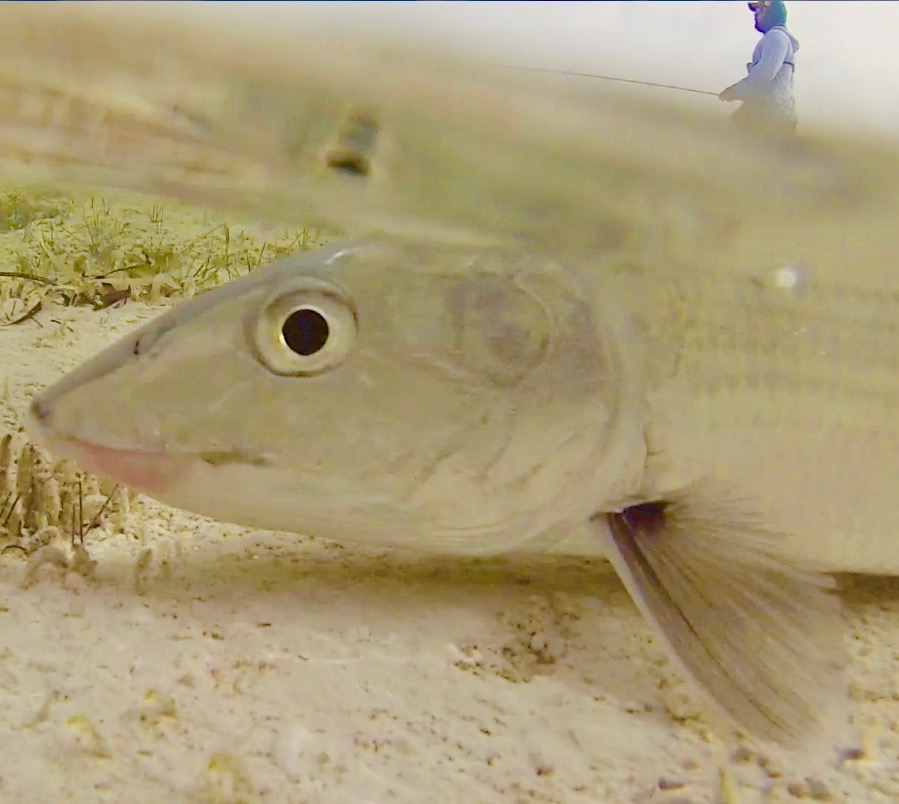My earliest introduction to the Bahamas was Andros, and I really feel at home when I go back. Although I am blessed to have traveled throughout the Bahamas for my ongoing research of bonefish and the bonefishing industry, it was my initial angling trip to Andros that created ties to the Bahamas that draw me back.
This, the largest and most sparsely developed of the Bahamian islands, offers some of the best fishing in the world. Andros is truncated by extensive, deep and vital oceanic creeks referred to as bights that act as fish highways, transporting rich nutrients from region to region and tremendous numbers of fish. North Andros, separated from Mangrove Cay by the north bight, extends roughly from Bering Point all the way north to the Joulters. Like the rest of Andros, a single road on the eastern fringe allows for travel from north to south. The western side of Andros is largely undeveloped, is challenging to reach and is now the largest Marine Protected Area in the Bahamas.
Bering Point can be considered an epicenter of bonefishing on Andros and in the Bahamas for that matter. This small fishing community lies on the Southeastern tip of Andros, south of Fresh Creek one of the largest settlements on Andros, and just south of the AUTEC naval base. Bering Point is home to many long-time lodges and some of the best-known guides in the world. Guides like Ivan Neymour, Charlie Smith, and Rupert Leadon started guiding anglers in the 40s and 50s, working to develop a premier bonefishing destination. Indeed, the flats of Andros are unrivaled in their sheer size and many areas on the west side of Andros remain relatively untouched.
Anglers visiting north Andros have a wide array of accommodations to choose from and while I was conducting interviews in the area, I stayed at the Andros Island Bonefish Club, founded by local legend Rupert Leadon, who passed in 2012. Although I was unable to interview Rupert for my research, I met and interviewed many of his family members. Through conversing with family and community members, it is very clear how much Mr. Leadon helped the local economy. Like the Leadon family, many guides working in Andros are descended from guiding greats, those men who ventured into a new industry receiving little credit for their tremendous efforts, until now.
Flats within easy wading from Bering Point are extensive and varied. Anglers should have wading boots and larger flies for deeper water and larger fish. Double-digit bonefish are common in Andros. Fish the tides, look for moving water, look for places that get less pressure and do not be afraid to wade deep for big fish… however, watch for sharks. You can bet that if you find good bonefishing, you will also find sharks. Be wary of sharks while releasing bonefish, and reduce the potential for predation of your released bonefish. Do this by using adequate rods, reels, and lines, by reducing fight time, by eliminating handling and using barbless hooks. “Keep ’em wet.” If you have to have a photo, consider waterproof cameras for interesting perspectives of you and your fish.
North Andros is very interesting geographically. The south by Bering Point is sub-tropical. In the north, starting roughly near Stafford Creek, where the beautiful Stafford Creek Lodge is located, are extensive pine forests and some agriculture creating a significant change from the south. Bonefish angling is available all along the eastern shores, and creeks are great places to start. Car rentals are readily available from local airports and adventuresome anglers can reap great rewards for getting off the proverbial beaten path. Some creek systems are extensive, and as with all of Andros, traveling to the west side requires a boat and expert local knowledge… a guide.
The northern tip of Andros is known as the Joulters, recently hit hard by Hurricane Matthew. Local guide Phillip Rolle graciously showed me some of the Joulters, and I can genuinely say the habitat is rich and the fishing is amazing. Miles and miles of hard white sandy bottom flats welcome anglers venturing to the area. I get the impression less angling pressure has permitted the continued health of local fish stocks. Huge schools of large fish move through countless cuts, bars, and shoals, making the need for a guide critical. Given the size of the Joulters and all of Andros for that matter, finding fish is a daunting task; local guides who fish every day will greatly improve your odds of catching fish.
Although the fishing on Andros is outstanding, there is much to do for non-anglers or on days away from the flats. Many blue holes dot the landscape, fantastic diving and snorkeling are easy to access, world-class birding and eco-tours are available, and a rich culture including festivals like Crab Fest make for a great trip.
For much more on this research please visit http://tomkarrow.wixsite.com/bahamas-guide-tek.
Tom Karrow is a doctoral researcher evaluating the sustainability of the Bahamas bonefishing industry through accessing local guide knowledge and history. Tom works in conjunction with Bonefish and Tarpon Trust, The University of the Bahamas and the Bahamas Fly Fishing Industry Association. Research is funded in part through partnerships with Nautilus Reels, R.L.Winston Fly Rods, FishPond, 12 Weight, Costa and World Angling.

